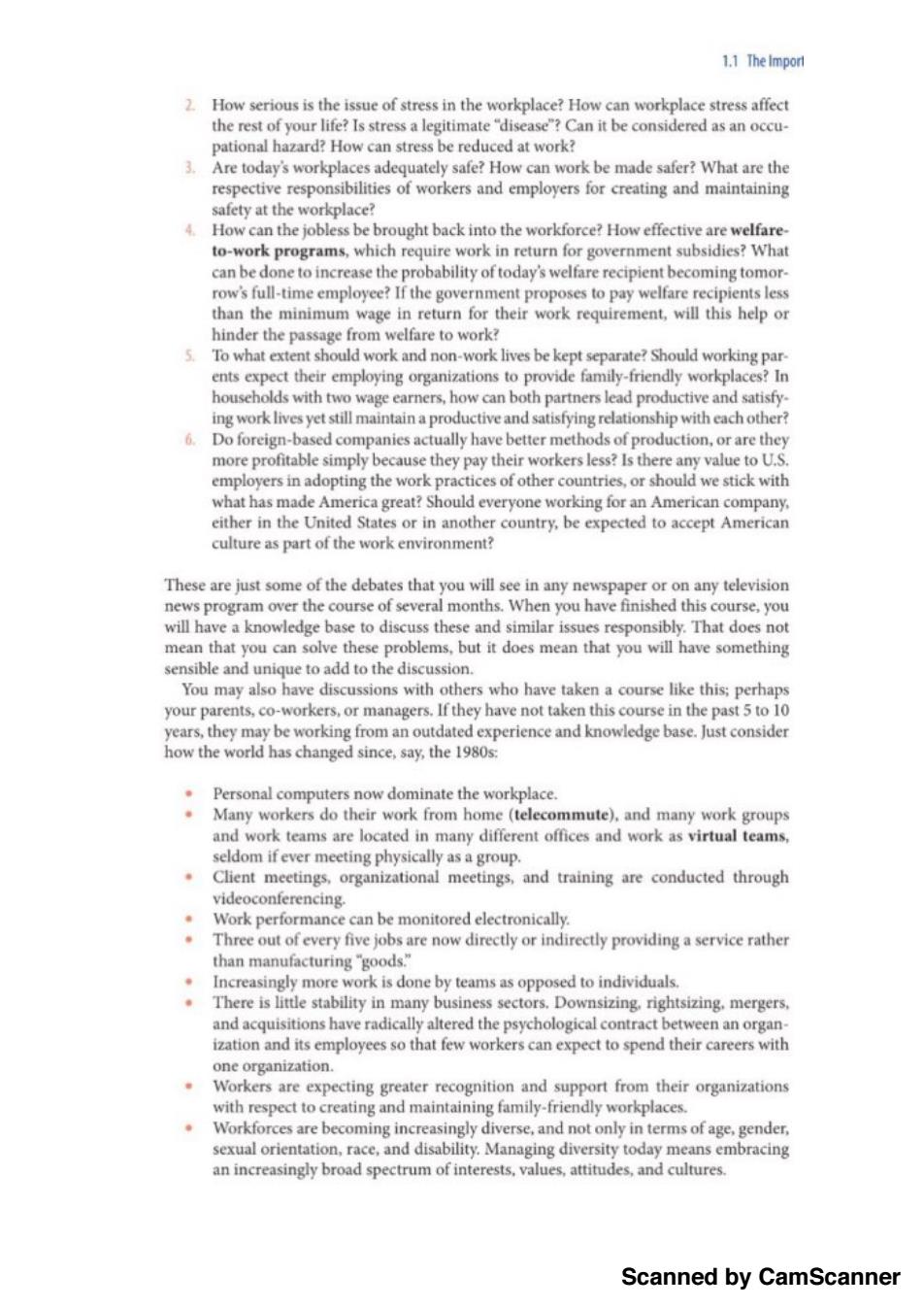正在加载图片...

1.1 The lmporl 2.How serious is the issue of stress in the workplace?How can workplace stress affect the rest of your life?Is stress a legitimate "disease"?Can it be considered as an occu- pational hazard?How can stress be reduced at work? 3. Are today's workplaces adequately safe?How can work be made safer?What are the respective responsibilities of workers and employers for creating and maintaining safety at the workplace? 4 How can the jobless be brought back into the workforce?How effective are welfare- to-work programs,which require work in return for government subsidies?What can be done to increase the probability of today's welfare recipient becoming tomor- row's full-time employee?If the government proposes to pay welfare recipients less than the minimum wage in return for their work requirement,will this help or hinder the passage from welfare to work? 5 To what extent should work and non-work lives be kept separate?Should working par- ents expect their employing organizations to provide family-friendly workplaces?In households with two wage earners,how can both partners lead productive and satisfy- ing work lives yet still maintain a productive and satisfying relationship with each other? 6 Do foreign-based companies actually have better methods of production,or are they more profitable simply because they pay their workers less?Is there any value to U.S. employers in adopting the work practices of other countries,or should we stick with what has made America great?Should everyone working for an American company. either in the United States or in another country,be expected to accept American culture as part of the work environment? These are just some of the debates that you will see in any newspaper or on any television news program over the course of several months.When you have finished this course,you will have a knowledge base to discuss these and similar issues responsibly.That does not mean that you can solve these problems,but it does mean that you will have something sensible and unique to add to the discussion. You may also have discussions with others who have taken a course like this;perhaps your parents,co-workers,or managers.If they have not taken this course in the past 5 to 10 years,they may be working from an outdated experience and knowledge base.Just consider how the world has changed since,say,the 1980s: Personal computers now dominate the workplace. Many workers do their work from home(telecommute),and many work groups and work teams are located in many different offices and work as virtual teams seldom if ever meeting physically as a group. Client meetings,organizational meetings,and training are conducted through videoconferencing Work performance can be monitored electronically. Three out of every five jobs are now directly or indirectly providing a service rather than manufacturing"goods." Increasingly more work is done by teams as opposed to individuals. There is little stability in many business sectors.Downsizing.rightsizing.mergers. and acquisitions have radically altered the psychological contract between an organ- ization and its employees so that few workers can expect to spend their careers with one organization. Workers are expecting greater recognition and support from their organizations with respect to creating and maintaining family-friendly workplaces. Workforces are becoming increasingly diverse,and not only in terms of age,gender, sexual orientation,race,and disability.Managing diversity today means embracing an increasingly broad spectrum of interests,values,attitudes,and cultures. Scanned by CamScannerScanned by CamScanner